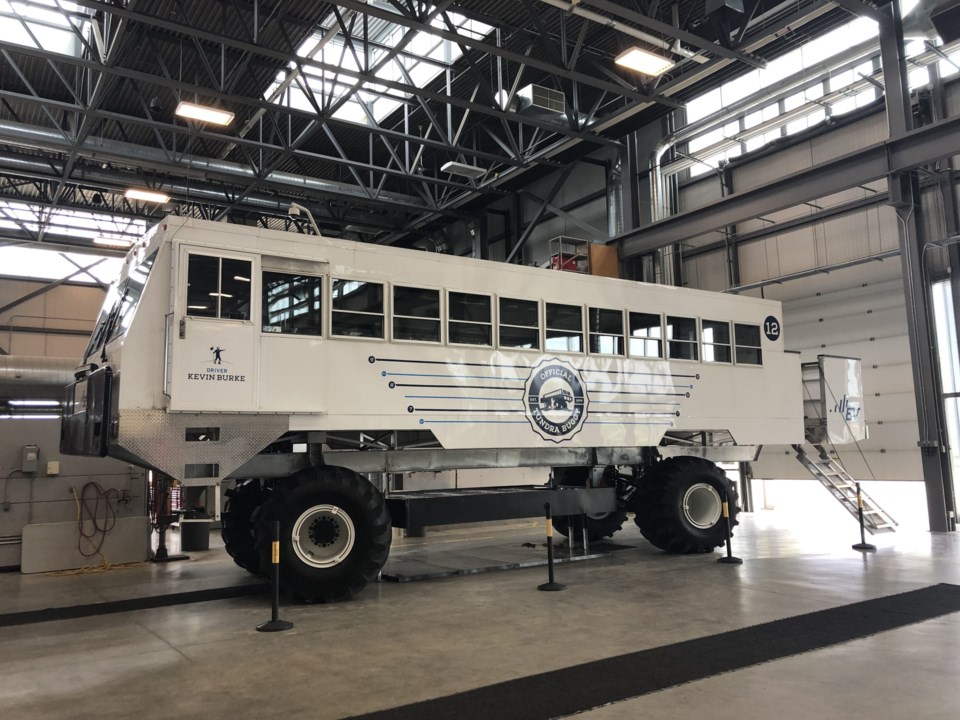Red River College (RRC) and Frontiers North Adventures have teamed up to transform a diesel-fuelled Tundra Buggy used to get up close and personal with polar bears near Churchill into an electric-powered and emission-free vehicle.
The electric Tundra Buggy, powered by a repurposed electric bus battery, was unveiled in Winnipeg Aug. 24.
Frontiers North CEO John Gunter said the vehicle was expected to reduce the company’s greenhouse gas emissions by 8.3 tonnes during the upcoming polar bear season and that emissions could be 3,600 tonnes lower over the next 25 years as more Tundra Buggies are converted.
In addition to reducing carbon emissions, electric power will also reduce the amount of noise generated during polar bear viewing expeditions. Though the bears themselves easily get used to diesel engine sounds, they carry great distances across the otherwise very quiet tundra landscape around the Hudson Bay port town.
“For years our team has been imagining the possibility of an electric drive Tundra Buggy,” Gunter said at the unveiling. “Navigating silently in a Tundra Buggy under Churchill’s northern lights and amongst Manitoba’s wild polar bears is a remarkable tourism experience unique in the world and one that Frontiers North Adventures is happy to deliver.”
A collaboration between Frontiers North, RRC’s Vehicle Technology & Energy Centre and the Vehicle Technology Centre, a non-profit organization dedicated to supporting Manitoba’s heavy vehicle manufacturing sector, the project was also supported by the provincial government.
“We are so pleased that this initiative was made possible in part by the government of Manitoba’s Conservation and Climate Fund,” said Conservation and Climate Minister Sarah Guillemard. “I hope to see it in its natural habitat at some point in the future.”




